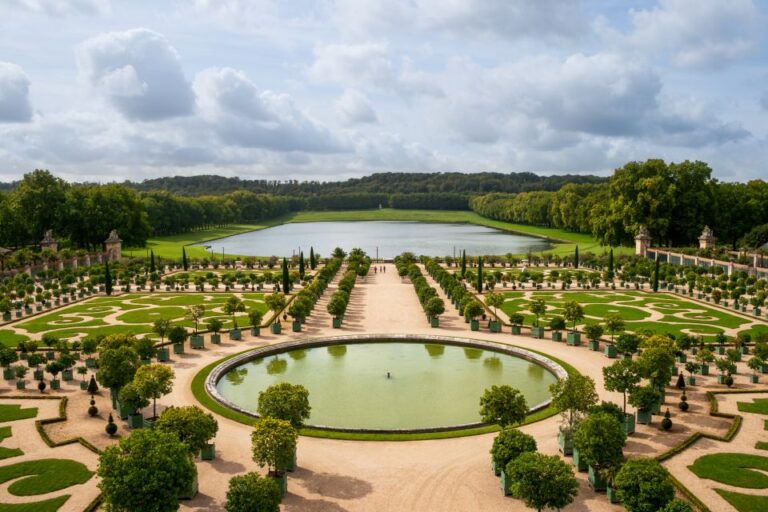When you’re in Aix-en-Provence, make sure to stop by the Cathédrale Saint-Sauveur (Cathedral of the Holy Savior). This stunning cathedral is free to enter and offers a unique blend of architectural styles that span several centuries. It’s a must-see for anyone interested in history, art, or religion.
A Cathedral with a Long History
The Cathédrale Saint-Sauveur stands on the site of the ancient Roman Forum. According to local legend, it’s also where a temple dedicated to Apollo once stood. The construction of the cathedral began way back in the 5th century and continued for hundreds of years. As a result, you’ll see a fascinating mix of Romanesque, Gothic, and Baroque elements throughout the building.
The Gothic façade, which dates from the 15th and 16th centuries, is particularly impressive. It features striking statues and reliefs depicting various saints and historical figures, including:
- Saint Mitre, who is shown holding his own head
- Louis d’Anjou, the Bishop of Toulouse
- Louis IX, the King of France
- Mary Magdalene
At the very top of the façade, you’ll see a representation of Saint Michael the Archangel in the act of slaying a dragon. The cathedral’s bell tower, although incomplete, is another notable Gothic structure. Its construction began in 1323 and was finished in 1425.
Exploring the Interior
Once you step inside the cathedral, you’ll be greeted by a beautiful white stone interior. As you make your way through the three naves, you’ll discover an array of architectural features and artifacts that are sure to capture your interest.
La Chapelle Saints-Côme-et-Damien
Just to the right of the entrance, you’ll find the 16th-century Chapelle Saints-Côme-et-Damien (Chapel of Saints Cosmas and Damian). This chapel houses some remarkable stone carvings, including a late-17th century statue depicting the biblical story of David and Goliath. You’ll also see the 4th-century marble sarcophagus of Saint Mitre here.
The Ancient Baptistery
One of the oldest parts of the cathedral is the sunken baptistery, which dates back to the 5th century. Here, you’ll find several fascinating features:
- An ancient octagonal well or font, surrounded by eight marble Corinthian columns and topped by a 16th-century octagonal dome
- A stone font from the 14th century
- Seven paintings created by Aixois artists in the 19th century, each representing one of the Seven Sacraments
Chapelle Sainte-Marie-Madeleine
In this small alcove, you’ll discover several statues, including one of Saint Anthony and another known as ‘la Vierge aux raisins’ (the Virgin of the Grapes).
Remnants of the Past
In the south transept, an excavated site reveals the remains of la Chapelle Saint-Sauveur, a previous chapel from the 5th or 6th century. This offers a glimpse into the cathedral’s long and complex history.
Chapelle du Corpus Domini
At the end of the south aisle (also known as the nave of Saint Maximin), you’ll find the entrance to the 17th-century Chapelle du Corpus Domini. The intricate gate is topped by a 17th-century fresco that depicts the Transfiguration of Christ.
The Apse and Gothic Choir
The apse, also called the Gothic Choir, is home to several notable features:
- The gilded 20th-century high altar
- The Bishop’s throne (Cathedra)
- 19th-century stained glass windows showcasing the coats of arms of high-ranking church clergy
Musical Elements
Music enthusiasts will appreciate the cathedral’s pipe organ, which dates from the mid-18th century. You’ll find it above the choir stalls along the left wall of the central nave. Its green and gold case is matched by a fake organ on the opposite side.
The wooden choir stalls, typically reserved for clergy, line both sides of the central nave just below the twin organs. See if you can spot the stall bearing the ecclesiastical coat of arms of Theodore-Augustin Forcade, who served as the Archbishop of Aix in the late 19th century.
Chapelle Notre-Dame de l’Espérance
At the end of the north aisle, you’ll come across the Chapelle Notre-Dame de l’Espérance (Chapel of Our Lady of Hope). This chapel features a 16th-century polychrome stone statue of Our Lady holding the infant Jesus.
Chapelle Saint-Catherine and the Aygosi Altar
Also located in the north aisle is the Chapelle Saint-Catherine (Chapel of Saint Catherine). Here, you’ll find the 15th-century Aygosi Altar, which is adorned with statues of Saints Maurice, Anne, Mary (holding the infant Jesus), and Margaret (with a dragon at her feet).
A Colorful Stained Glass Window
Above the main portal in the central nave, take a moment to admire the colorful 19th-century stained glass window. It symbolizes the Triumph of Faith and adds a beautiful touch of color to the cathedral’s interior.
Plan Your Visit
To visit the Cathédrale Saint-Sauveur, head to 34 Place des Martyrs-de-la-Résistance in the heart of Aix-en-Provence. Remember, admission is free, so you can explore this remarkable cathedral at your own pace and really take in all the details.
As you wander through the cathedral, try to imagine the centuries of worship and events that have taken place within these ancient walls. From the unique blend of architectural styles to the fascinating artifacts and artwork, the Cathédrale Saint-Sauveur offers a glimpse into the rich religious and cultural heritage of Aix-en-Provence.
Whether you’re a history buff, an art lover, or simply someone who appreciates beautiful architecture, this cathedral is sure to leave a lasting impression. So, make sure to add it to your must-see list when you’re in Aix-en-Provence!



